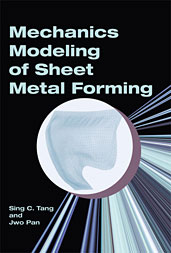Book

Mechanics Modeling of Sheet Metal Forming
2007-04-10
Functioning as an introduction to modern mechanics principles and various applications that deal with the science, mathematics and technical aspects of sheet metal forming, Mechanics Modeling of Sheet Metal Forming details theoretically sound formulations based on principles of continuum mechanics for finite or large deformation, which can then be implemented into simulation codes. The forming processes of complex panels by computer codes, in addition to extensive practical examples, are recreated throughout the many chapters of this book in order to benefit practicing engineers by helping them better understand the output of simulation software.
